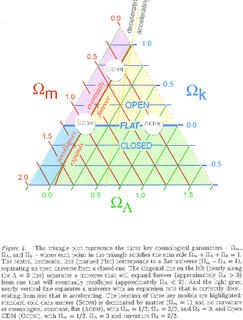"Not often in life has a man given me so much happiness by his mere presence as you have done," Einstein wrote to Bohr. "I have learned much from you, mainly from your sensitive approach to scientific problems."
John G. Cramer
This column is about experimental tests of the various interpretations of quantum mechanics. The question at issue is whether we can perform experiments that can show whether there is an "observer-created reality" as suggested by the Copenhagen Interpretation, or a peacock’s tail of rapidly branching alternate universes, as suggested by the Many-Worlds Interpretation, or forward-backward in time handshakes, as suggested by the Transactional Interpretation? Until recently, I would have said that this was an impossible task, but a new experiment has changed my view, and I now believe that the Copenhagen and Many-Worlds Interpretations (at least as they are usually presented) have been falsified by experiment.
The Single Photon Experiment at Rowan University is a Success!
Entanglement applies to two or more particles even if one of them is used as input to the two slit experiment, it is not applicable to single particle experiments.
Afshars experiment is conducted in such a manner that it is the setup of the experiment coupled with the conservation of momentum that allows us to know exactly which slit the photon has gone through.
Whilst knowing which way the photon has gone we also manage to show the absense of interference with both slits open via intererence minima.
Measurement without “measurement”: Experimental violation of Complementarity and its aftermath
Bohr’s Principle of Complementarity of wave and particle aspects of quantum systems has been a cornerstone of quantum mechanics since its inception. Einstein, Schrödinger and deBroglie vehemently disagreed with Bohr for decades, but were unable to point out the error in Bohr’s arguments. I will report three recent experiments in which Complementarity fails, and argue that the results call for an upgrade of the Quantum Measurement theory. Finally, I will introduce the novel concept of Contextual Null Measurement (CNM) and discuss some of its surprising applications. Web-page: users.rowan.edu/~afshar/ Preprint (published in Proc. SPIE 5866, 229-244, 2005): http://www.irims.org/quant-ph/030503/
Violation of the principle of complementarity, and its implications
Shahriar S. Afshar
Bohr's principle of complementarity predicts that in a welcher weg ("which-way") experiment, obtaining fully visible interference pattern should lead to the destruction of the path knowledge. Here I report a failure for this prediction in an optical interferometry experiment. Coherent laser light is passed through a dual pinhole and allowed to go through a converging lens, which forms well-resolved images of the respective pinholes, providing complete path knowledge. A series of thin wires are then placed at previously measured positions corresponding to the dark fringes of the interference pattern upstream of the lens. No reduction in the resolution and total radiant flux of either image is found in direct disagreement with the predictions of the principle of complementarity. In this paper, a critique of the current measurement theory is offered, and a novel nonperturbative technique for ensemble properties is introduced. Also, another version of this experiment without an imaging lens is suggested, and some of the implications of the violation of complementarity for another suggested experiment to investigate the nature of the photon and its "empty wave" is briefly discussed.

